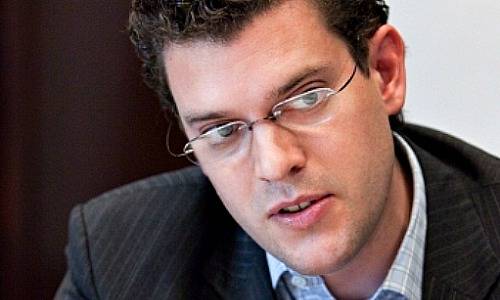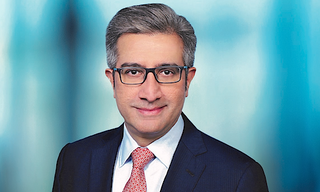Twenty years ago, the world was facing the Asian Financial Crisis. Michael Hasenstab looks at how some of the most unloved local currency markets today represent some very exciting opportunities in a finews.first essay.
finews.first is a forum for renowned authors specialized on economic and financial topics. The texts are published in both German and English. The publishers of finews.com are responsible for the selection.
The Asian Financial Crisis (AFC) that began 20 years ago had lingering effects well into 1998, casting a long shadow over many of the region’s economies for several years. Since that time, the lessons of that crisis have played a critical role in broadly reshaping emerging markets, particularly in Asia but also around the world.
I was living in Asia during the height of the crisis and I saw the devastating effects it had on local economies. Countries like Indonesia, South Korea, Thailand, Malaysia and the Philippines were hit hard by massive depreciations of their currencies, rapidly magnifying their external vulnerabilities.
Now two decades on, several countries have worked hard to build up their resilience to external shocks. Many of today’s policymakers that lived through the AFC and learned from it have been working to minimize the chances of repeating it.
«These adjustments have had profound effects on their economies»
Some of these countries have spent years increasing their external reserve cushions, bringing their current accounts into surplus or close to balance, improving their fiscal accounts and reducing their dollar liabilities by turning to domestic sources of funding. These adjustments have had profound effects on their economies; today there is a subset of emerging markets (EMs) that have stronger growth and healthier balances than many developed economies.
I see several undervalued investment opportunities across the local-currency markets, particularly among countries that directly learned from the lessons of the AFC and worked for decades to fortify their economies against future shocks.
Indonesia is a strong example of a country that has actively reduced its external dependencies since the AFC. After living through the crisis’ devastating effects, Indonesia moved to an ambitious structural reform program that sought to strengthen its economy, balance its growth drivers and accelerate domestic development. These ongoing structural reforms have fortified its underlying economy and positioned it better to deflect external shocks.
«More recently, Indonesia proved it could handle a sharp decline in commodity prices»
But it’s not just mere speculation as to whether those structural reforms have worked – they have been actively tested by real exogenous shocks over the last decade. In 2008, the global financial crisis roiled economies around the world. However, Indonesia had far fewer external liabilities and a more balanced, domestically diversified economy than it did in 1997. Consequently, there was no repeat of the AFC in Indonesia this time around, despite the risk-off currency depreciations across emerging markets.
More recently, Indonesia proved it could handle a sharp decline in commodity prices, such as the collapse in oil prices in the fourth quarter of 2014 and its continued deepening through early 2016. Concurrent with that substantial decline in oil prices, markets began to fear a contraction in China’s economy in mid-2015 as its rate of growth moderated. The collapse in oil prices coupled with fears over China largely drove investors out of emerging markets, leading to broad currency depreciations across the asset class.
«The transition to domestic funding has improved financial resilience»
However, Indonesia’s economy remained resilient throughout these events, averaging year-on-year gross domestic product (GDP) growth around 5 percent. Twenty years ago it would have been difficult for countries like Indonesia to weather a commodity price shock, an exchange-rate shock and a trade shock all at the same time. But today, many countries have greatly reduced these external vulnerabilities. I see highly compelling value in Indonesia’s local-currency market, and the country’s longer-term prospects continue to look promising.
One of the most important steps that many emerging markets have taken over the past decade is the expansion of their domestic financial markets.
«Several emerging markets have greatly reduced their dependence on external financing»
In the past, the lack of a strong domestic investor base often magnified the consequences of financial volatility. In contrast, domestic institutional investors today are far more prevalent in many domestic markets, and often act as a stabilizing force when asset prices collapse by stepping in to buy assets when foreign investors may be fleeing them.
Overall, the transition to domestic funding has improved financial resilience within many countries. Additional measures taken have included:
- Keeping exchange rates flexible, which has enabled quick adjustments to exogenous shocks;
- Maintaining substantial stocks of foreign exchange reserves;
- Following prudent fiscal policies over an extended period, which reduces immediate vulnerabilities while leaving room for fiscal stabilizers to help cushion shocks;
- Supporting a balanced macro policy mix, with independent, credible central banks in better position to keep inflation anchored while supporting growth in coordination with fiscal policy;
- Strengthening balance sheets, notably at the government and financial sector level – though in some countries, corporations have instead increased debt levels; and
- Developing robust and stable banking sectors that operate in better-regulated environments.
Overall, several emerging markets in Asia and around the world have greatly reduced their dependence on external financing and strengthened their overall financial stability; I see promising futures for a number of these countries. While the AFC had painful consequences 20 years ago, the lessons of that crisis have guided many countries toward far better solutions today.
Michael Hasenstab is executive vice president and chief investment officer for Templeton Global Macro, which conducts in-depth global macroeconomic analysis covering thematic topics, regional and country analysis, and interest rate, currency and sovereign credit market outlooks. He is a portfolio manager for a number of funds, including Templeton Global Bond Fund and Templeton Global Total Return Fund.
He holds a Ph.D. in economics from the Asia Pacific School of Economics and Management at Australian National University, a master's degree in economics of development from the Australian National University, and a B.A. in international relations/political economy from Carleton College in the United States.
Previous contributions: Rudi Bogni, Peter Kurer, Oliver Berger, Rolf Banz, Dieter Ruloff, Samuel Gerber, Werner Vogt, Walter Wittmann, Alfred Mettler, Peter Hody, Robert Holzach, Craig Murray, David Zollinger, Arthur Bolliger, Beat Kappeler, Chris Rowe, Stefan Gerlach, Marc Lussy, Nuno Fernandes, Beat Wittmann, Richard Egger, Maurice Pedergnana, Marco Bargel, Steve Hanke, Andreas Britt, Urs Schoettli, Ursula Finsterwald, Stefan Kreuzkamp, Katharina Bart, Oliver Bussmann, Michael Benz, Peter Hody, Albert Steck, Andreas Britt, Martin Dahinden, Thomas Fedier, Alfred Mettler, Brigitte Strebel, Peter Hody, Mirjam Staub-Bisang, Guido Schilling, Adriano B. Lucatelli, Nicolas Roth, Thorsten Polleit, Kim Iskyan, Stephen Dover, Denise Kenyon-Rouvinez, Christian Dreyer, Peter Kurer, Kinan Khadam-Al-Jame, Werner E. Rutsch, Robert Hemmi, Claude Baumann, Anton Affentranger, Yves Mirabaud, Katharina Bart, Frédéric Papp, Hans-Martin Kraus, Gerard Guerdat, Didier Saint-Georges, Mario Bassi, Stephen Thariyan, Dan Steinbock, Rino Borini and Bert Flossbach.























